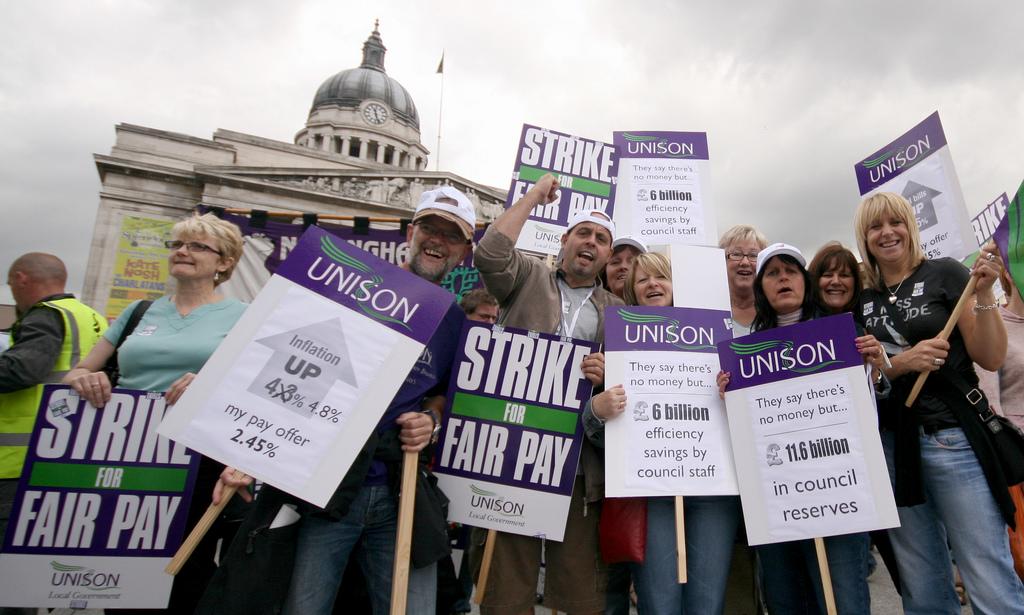Work and Trade Unions

Despite massive scepticism towards trade unions, they have nevertheless existed in the US since the end of the 18th century. Unions grew during the Depression in the 1930’s as unemployment rates increased. Similarly, the years around the Second World War led to union growth. In other periods, union development has been slow.
In the second half of the last century, membership dropped. One reason might be the growth of the service sector and the decline of manufacturing industries, where the traditional stronghold of the unions has been. More importantly, Americans prefer little or no interference in personal matters such as career choice and movement, examples being negotiating salary, benefits, working hours and job description. While Europeans tend to stay in the same job for their entire working lifetime to ensure job-security, stability, and seniority benefits, American are restless.
Changing jobs and moving across the country are often considered exciting and positive challenges to those interested in improving their career opportunities. In fact, most Americans who relocate do so due to the demands of their career.
Americans disagree on the need for trade unions. Some people agree that union membership gives the workers a chance to be heard and to improve conditions by offering a social network and a feeling of belonging, security and pride.
Nevertheless, only 12.4% of the labor force are union members. Most people reject unions for slowing down business, hence reducing their own personal profit.
- When was the greatest period of growth for American unions?
- Why did membership drop in the last half of the 20th century?
- What percentage of the labor force are union members today?
Do some research on the Internet using the following words: census bureau, labor union, statistics . The Census Bureau is like 'Statistisk Sentralbyrå' in the USA.
Paste some of your findings into a text document and add titles and comments so that an average Norwegian student may understand what it is all about. If you do an image search, you may want to search for file extensions such as *.png, *. swf or *.pdf as they often offer high quality graphics.
Using screen capture software or the 'print screen' button on your keyboard, you may zoom in on certain parts of tables or charts
Would you consider joining a union and why?
Sit in pairs and formulate questions and answers using the words and phrases below:
- Trade unions
- To perceive
- Scepticisim
- Depression
- Membership
- Manufacturing
- Organized crime
- Teamsters
- To vanish
- To embezzle
- To reject